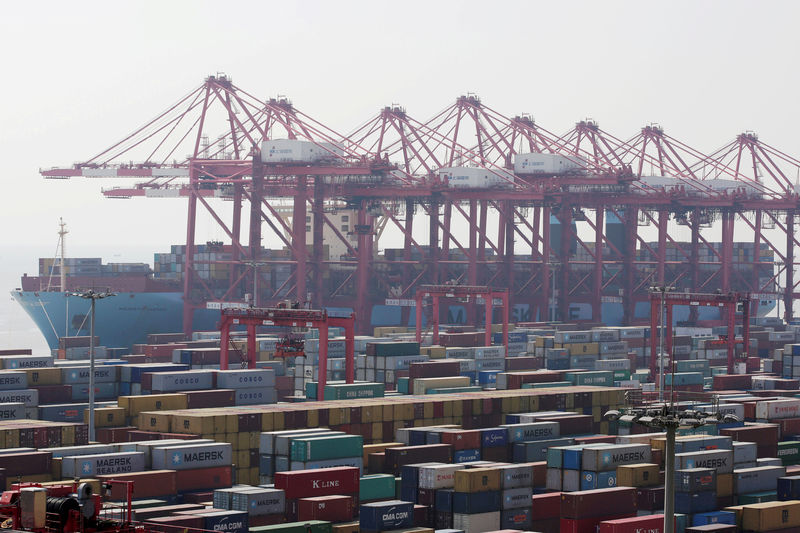 © Reuters. FILE PHOTO:Container ship is seen at the Yangshan Deep Water Port, part of the Shanghai Free Trade Zone, in Shanghai
© Reuters. FILE PHOTO:Container ship is seen at the Yangshan Deep Water Port, part of the Shanghai Free Trade Zone, in ShanghaiBEIJING (Reuters) – China is expected to report solid growth in January trade this week, moderating inflation and resurgent bank lending, but the timing of the long Lunar New Year holidays will make it difficult to determine clear trends in the world’s second-largest economy for at least another month.
Business surveys suggest a resilient start to 2018, with further expansion in manufacturing and robust growth in services. But most economists still expect a gradual loss of momentum in coming months as borrowing costs rise and the property market cools.
In coming weeks China will release foreign exchange reserves, trade, inflation and bank lending data for January, but it will not report combined January and February data for industrial output, retail sales and investment until March in a bid to smooth out seasonal distortions.
Hundreds of millions of Chinese travel over the Lunar New Year holiday and many factories and businesses shut, often for weeks. This year the festivities begin on Feb. 16, versus Jan. 28 last year.
Still, analysts will be scouring what data is available for clues on the state of both global and domestic Chinese demand.
January exports likely grew close to 10 percent on-year, a Reuters survey of 55 economists showed (see table below). That would be a slight softening from December but still point to a solid start to a year that is expected to see an increase in trade disputes between China and the United States.
China’s imports may garner more attention, after a sharp deceleration in December added to worries of a slowdown. Import growth may have doubled to nearly 10 percent, though some of the jump may have been due to inventory building ahead of the holiday rather than a pick-up in demand.
Inflation readings are expected to cool slightly — reinforcing views of broader slackening. Factory-gate inflation, which generated strong industrial profits last year, is expected to have slowed for a third month, while consumer inflation likely fell to the lowest since July.
Bank lending, meanwhile, is expected to be the highest in a year at some 2 trillion yuan ($317.7 billion), after slumping in December. Since Chinese banks tend to front-load loans each year to win market share, analysts will likely be more focused on how the government’s continued crackdown on debt risks is impacting companies’ access to financing.
Foreign exchange reserves, meanwhile, likely rose for the 12th month in a row as a strong yuan and tight regulations discourage capital outflows.
China’s economy grew by a forecast-beating 6.9 percent last year thanks to a construction boom and export recovery, but economists expect the pace to slow to 6.5 percent this year, which could weigh on other emerging economies and commodities markets.
Fusion Media or anyone involved with Fusion Media will not accept any liability for loss or damage as a result of reliance on the information including data, quotes, charts and buy/sell signals contained within this website. Please be fully informed regarding the risks and costs associated with trading the financial markets, it is one of the riskiest investment forms possible.
Source: Investing.com





























